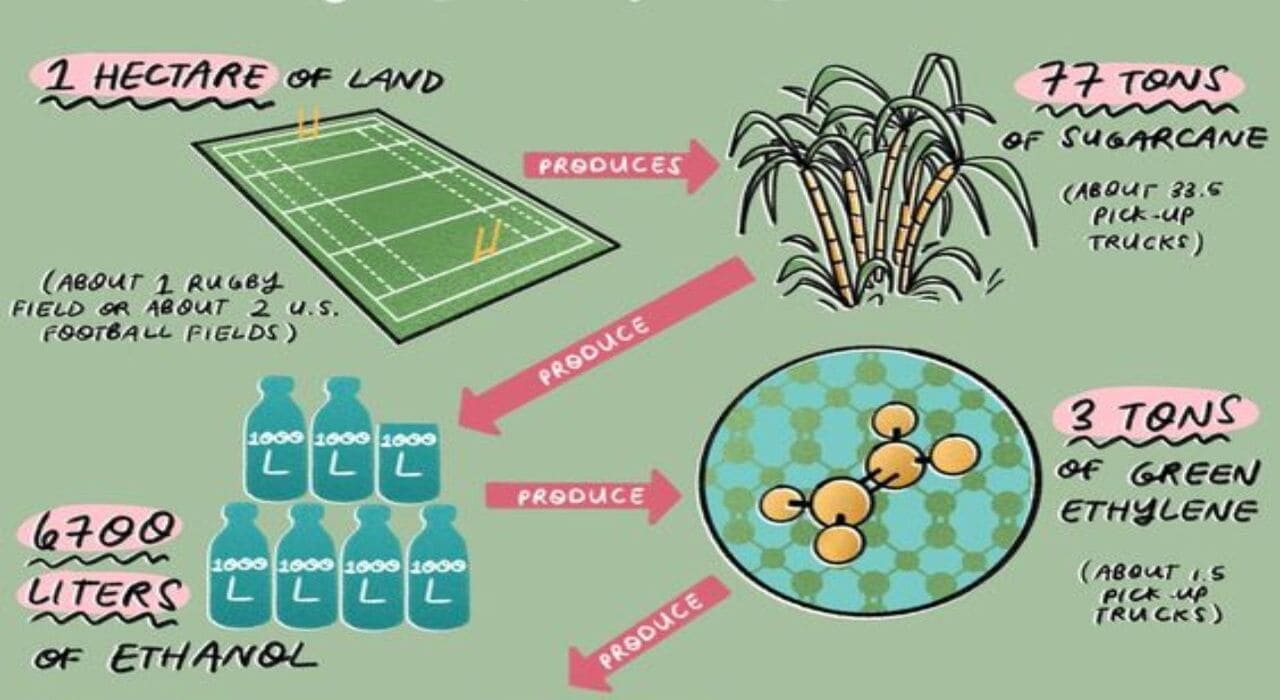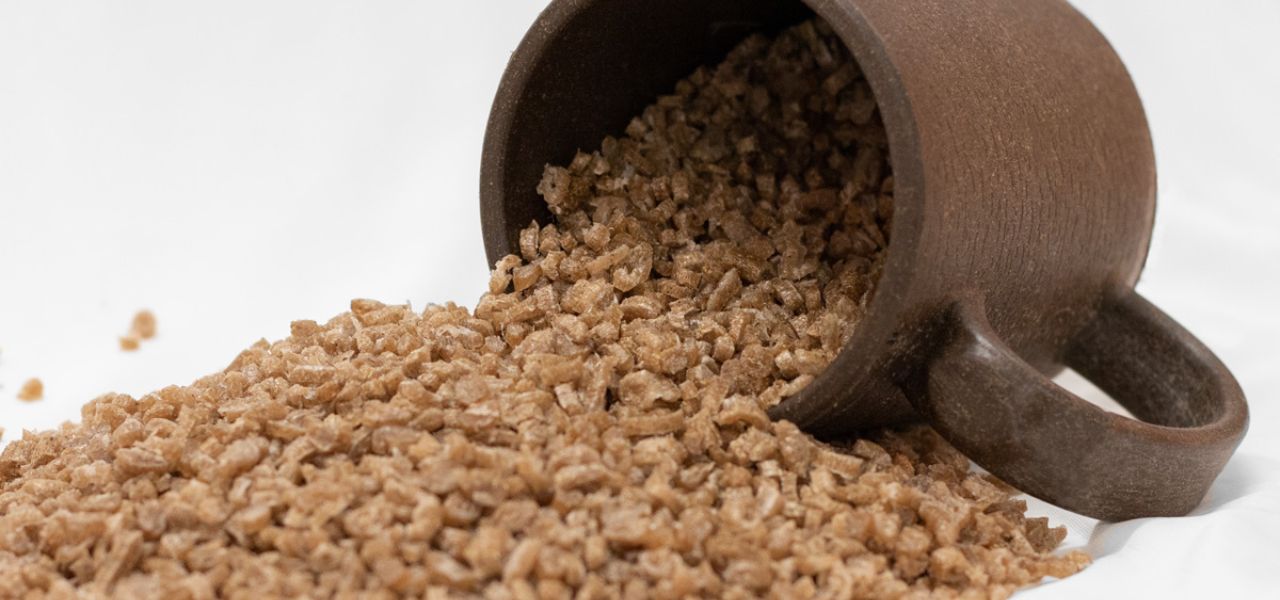Bio-composite Made from Sugarcane Bagasse

Welcome to our captivating blog, where we unveil the extraordinary journey of transforming waste into innovation with the bio-composite made from sugarcane bagasse. As a byproduct of sugar production, sugarcane bagasse has long been overlooked as mere waste.
However, visionary thinkers have harnessed its potential, revolutionizing its purpose across various industries. Join us as we embark on a fascinating exploration into the realm of bio-composites derived from sugarcane bagasse, uncovering the boundless opportunities it presents for redefining waste and embracing groundbreaking advancements. Get ready to immerse yourself in the captivating world of this exceptional bio-composite material.
Sugarcane Bagasse: An Abundant Byproduct

Sugarcane bagasse, a fibrous residue left after extracting juice from sugarcane stalks, is a key ingredient in the production of bio-composite materials. Composed of cellulose, hemicellulose, and lignin, sugarcane bagasse possesses excellent potential for sustainable applications.
With over 80% of the world's sugar production coming from sugarcane, there is a substantial quantity of bagasse generated as a byproduct. This abundance makes it an attractive resource for transforming into bio-composite materials. As a readily available waste material, sugarcane bagasse offers a sustainable alternative to traditional composite materials derived from non-renewable resources.
The availability of sugarcane bagasse varies depending on the region's sugarcane industry. Countries with significant sugarcane production, such as Brazil, India, and Thailand, have a surplus of bagasse. The vast quantities generated by sugar mills and refineries provide ample raw material for bio-composite production, ensuring a consistent supply.
One notable company that utilizes bagasse sugarcane in their manufacturing processes is AirX. They have revolutionized the market by producing a range of sustainable products from bagasse sugarcane, including cups, amenities, and cutlery. These products offer a viable alternative to traditional plastic-based counterparts, reducing reliance on non-renewable resources and minimizing environmental impact.
The bio-composite materials derived from bagasse sugarcane by AirX are not only biodegradable but also possess exceptional strength and durability. They provide a practical and sustainable solution for single-use items, catering to the increasing demand for environmentally friendly alternatives.
By transforming sugarcane bagasse into bio-composite materials, AirX showcases the potential of this abundant byproduct. Their innovative approach demonstrates that sustainable products can be created from renewable resources, helping to reduce waste and combat the global plastic pollution crisis.
In conclusion, sugarcane bagasse represents a valuable and abundant byproduct that can be utilized to produce bio-composite materials. Companies like AirX exemplify the possibilities by manufacturing a diverse range of products, such as cups, amenities, and cutlery, from bagasse sugarcane. Embracing these sustainable alternatives promotes a greener future and contributes to the reduction of plastic waste.

Bio-plastic made from sugarcane bagasse can be recycled
Environmental Benefits
Bio-composite made from sugarcane bagasse offer remarkable environmental benefits, contributing to a sustainable and greener future. Let's explore the key advantages in more detail.
Reduced reliance on non-renewable resources: By utilizing sugarcane bagasse, a byproduct of sugar production, as the primary material for bio-composites, we reduce our dependence on non-renewable resources like petroleum-based plastics. This shift towards renewable resources helps preserve valuable fossil fuels and promotes a more sustainable approach to manufacturing.
Lower carbon footprint and greenhouse gas emissions: Sugarcane bagasse bio-composites have a significantly lower carbon footprint compared to conventional materials. The production process emits fewer greenhouse gases, reducing the overall environmental impact. By choosing bio-composite made from sugarcane bagasse, we actively contribute to mitigating climate change and preserving air quality.
Contribution to waste reduction and circular economy: The utilization of sugarcane bagasse, which would otherwise be considered waste, contributes to waste reduction efforts. By transforming this agricultural residue into bio-composites, we repurpose and maximize the value of a previously discarded resource. This aligns with the principles of the circular economy, promoting a closed-loop system where materials are reused, reducing waste generation, and minimizing environmental strain.
Embracing bio-composite made from sugarcane bagasse is a significant step towards achieving sustainability goals. These materials not only reduce reliance on non-renewable resources but also help lower carbon emissions and contribute to waste reduction and the circular economy. By adopting these innovative solutions, industries can actively participate in creating a more environmentally conscious and responsible future.
Applications of Sugarcane Bagasse Bio-composites
Bio-composite made from sugarcane bagasse offer a range of sustainable applications across various industries. As a renewable and eco-friendly material, it provides an excellent alternative to traditional plastics and contributes to the reduction of environmental impact.
AirX: A leading company in sustainable materials, AirX has successfully integrated sustainable polyethylene into their product offerings. By leveraging renewable feedstocks and innovative production processes, they have developed eco-friendly packaging solutions. These solutions not only provide the same level of functionality and performance as traditional polyethylene but also significantly reduce environmental impact. AirX's commitment to sustainability and their successful implementation of sustainable polyethylene have garnered recognition and praise within the industry.

Packaging Industry: Sustainable Alternatives to Plastic Packaging
In the packaging industry, bio-composites made from sugarcane bagasse are gaining traction as a sustainable alternative to plastic packaging. These bio-composites can be molded into various forms, such as trays, containers, and films, offering excellent durability and barrier properties. They provide a renewable and biodegradable solution, reducing the reliance on non-biodegradable plastics and helping to address the growing issue of plastic waste.
Construction Industry: Sustainable Building Materials
Sugarcane bagasse bio-composites have found application in the construction industry as sustainable building materials. They can be used for panels, boards, and even insulation materials. These bio-composites offer excellent thermal and acoustic insulation properties, contributing to energy-efficient buildings. Additionally, their lightweight nature makes them ideal for reducing the overall weight of structures without compromising on strength and durability.
Automotive Industry: Lightweight Components for Improved Fuel Efficiency
In the automotive industry, lightweighting is a key strategy to improve fuel efficiency and reduce carbon emissions. Bio-composites made from sugarcane bagasse are being used to manufacture lightweight components such as interior panels, door trims, and seat backs. These components offer comparable strength to traditional materials while significantly reducing the weight of the vehicle. By incorporating sugarcane bagasse bio-composites, manufacturers can enhance fuel efficiency and contribute to a greener transportation sector.
Consumer Goods: Eco-Friendly Products and Disposable Items
Sugarcane bagasse bio-composites are making their way into the production of consumer goods, offering eco-friendly alternatives to conventional products. They can be used to create a wide range of items such as disposable cutlery, food containers, and packaging materials. These bio-composites are biodegradable and compostable, addressing the issue of single-use plastic waste and providing consumers with more sustainable choices.
Other Industries: Potential Applications in Various Sectors
Beyond the mentioned industries, sugarcane bagasse bio-composites hold potential for applications in other sectors as well. For example, they can be used in the manufacturing of furniture, electronic components, and agricultural products. Their versatility and eco-friendly nature make them a promising material for innovative solutions across a wide range of industries.
By embracing bio-composites made from sugarcane bagasse, industries can make significant strides towards sustainability. These materials offer eco-friendly options in packaging, construction, automotive, consumer goods, and numerous other sectors, promoting a greener and more environmentally conscious future.
Contacts
AirX is the world's first carbon-negative bio-material made from coffee grounds manufacturer.
We specialize in producing bio-based composites using recycled carbohydrates derived from by-products such as coffee grounds, coconut husk, husk, and bamboo. Our goal is to promote sustainability through the use of eco-friendly materials.
We are always here to help and provide the best service possible. If you have any questions or would like to receive advice and feedback directly from our sales staff, please do not hesitate to contact us. You can reach us through:
- Whatsapp: +84 969 742 950
- Email: [email protected]
We look forward to hearing from you!

